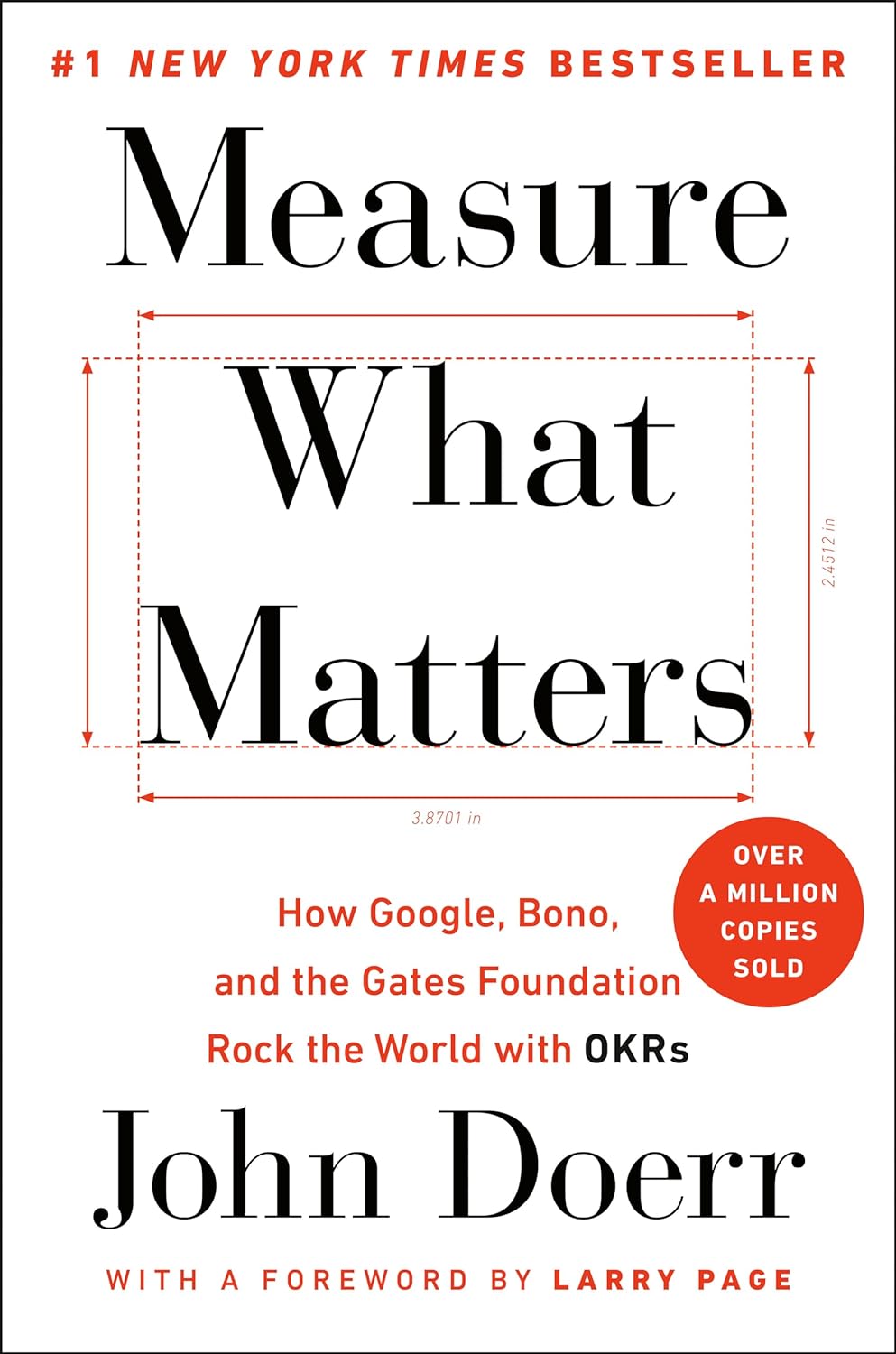
Measure What Matters
“Measure What Matters” by John Doerr is a compelling guide to the use of Objectives and Key Results (OKRs), a goal-setting system pioneered at Intel and later adopted by companies like Google and Amazon. Doerr demonstrates through numerous case studies and personal anecdotes how OKRs can drive alignment, focus, and accountability within organizations of any size or industry. The book emphasizes the importance of setting ambitious yet achievable objectives and measurable key results to track progress and drive innovation. Doerr argues that OKRs not only improve organizational performance but also foster transparency and empower employees to prioritize their work effectively.
Key Ideas:
- OKRs (Objectives and Key Results): A goal-setting system that helps organizations define and track objectives along with measurable outcomes.
- Ambitious Goals: Encouraging teams to set ambitious objectives that push boundaries and inspire innovation.
- Transparency and Accountability: OKRs promote transparency by making goals visible to the entire organization, fostering accountability at all levels.
- Continuous Improvement: The iterative nature of OKRs allows for ongoing adjustments and improvements based on real-time data and feedback.
- Alignment: OKRs align teams and individuals towards common goals, ensuring that everyone is working towards the same objectives.
- Focus and Prioritization: By setting clear priorities and focusing efforts on key results, OKRs help teams avoid distractions and achieve meaningful outcomes.
- Cascading OKRs: The process of cascading OKRs from top-level objectives down to individual goals ensures alignment and coherence across the organization.
- Learning from Failure: Embracing failures as opportunities for learning and growth, integral to the OKR process.
- Examples and Case Studies: Doerr provides numerous examples from companies like Google, Intel, and others to illustrate the successful implementation and impact of OKRs.
“Measure What Matters” serves as a practical guide for leaders and managers looking to implement a structured and effective goal-setting framework that drives organizational success and fosters a culture of continuous improvement.
(summary created with the aid of AI)
I read the book at the recommendation of the training lead for the OKR class I took when I became a product owner. The class was interesting and using OKR to help set goals seemed like a nice transparent way to ensure that my team and I were aligned with our corporate OKR goals. Doerr went into great detail in this book with a lot of real world examples of OKR in use. While the theories were all sound I found trying to implement them to align with top level OKR was a struggle – but using the ideas in the book I pivoted and just set OKR for my team based on how I interpreted the higher level OKR – setting aggressive goals and reachable milestones that the whole team can work together to achieve.
I think it’s a bit early to determine the success rate of using this system, especially as the team hasn’t fully embraced them yet (it’s a learning process) – and I find I have to frequently refer back to the book to ensure we’re doing the work correctly. However, since the company I work for is all in on OKR I think I’m going to revisit it with my team as we have a few new people and that’s the perfect time to try to implement something new!
I think this book is a great introduction to objectives and key results and if you manage a team and are struggling to align your goals to your company’s strategies this might be a great way to break that roadblock. I recommend it for any leaders who are looking for a system to set goals that isn’t too laborious or punitive.